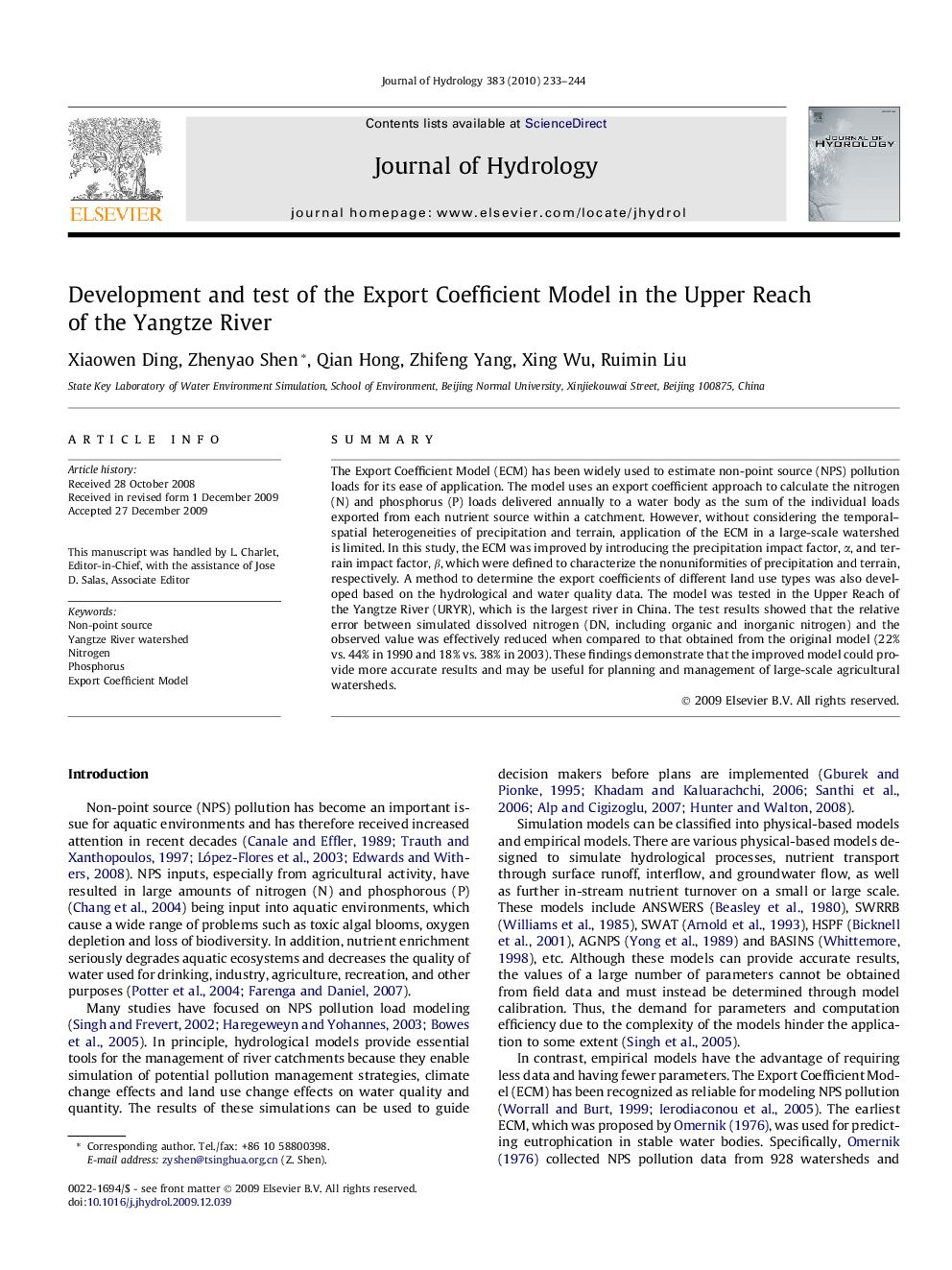| Article ID | Journal | Published Year | Pages | File Type |
|---|---|---|---|---|
| 4578471 | Journal of Hydrology | 2010 | 12 Pages |
SummaryThe Export Coefficient Model (ECM) has been widely used to estimate non-point source (NPS) pollution loads for its ease of application. The model uses an export coefficient approach to calculate the nitrogen (N) and phosphorus (P) loads delivered annually to a water body as the sum of the individual loads exported from each nutrient source within a catchment. However, without considering the temporal–spatial heterogeneities of precipitation and terrain, application of the ECM in a large-scale watershed is limited. In this study, the ECM was improved by introducing the precipitation impact factor, α, and terrain impact factor, β, which were defined to characterize the nonuniformities of precipitation and terrain, respectively. A method to determine the export coefficients of different land use types was also developed based on the hydrological and water quality data. The model was tested in the Upper Reach of the Yangtze River (URYR), which is the largest river in China. The test results showed that the relative error between simulated dissolved nitrogen (DN, including organic and inorganic nitrogen) and the observed value was effectively reduced when compared to that obtained from the original model (22% vs. 44% in 1990 and 18% vs. 38% in 2003). These findings demonstrate that the improved model could provide more accurate results and may be useful for planning and management of large-scale agricultural watersheds.
